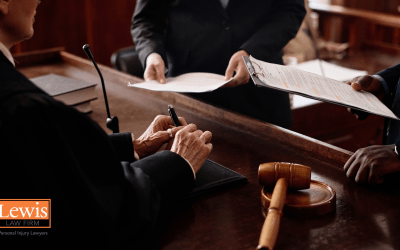Texting has become the main mode of communication for a lot of people, with some surveys suggesting that over one-third of respondents prefer texting over phone calls and emails, while Pew Research shows that young adults are the most avid texters by a wide margin.
So it’s no wonder that new(ish) means of communication, especially when it’s easily traceable, has become valid evidence in a court of law. Texts can help prove liability, establish credible timelines, or even uncover threats and admissions, so permitting them as evidence can truly make or break a personal injury suit.
Here, we’ll go over how texts can be used in court, why proper authentication is crucial, and practical steps to accomplish this.
Can Text Messages Be Used as Evidence in Illinois?
Yes! The Illinois Rules of Evidence, specifically Rule 901, states that “the requirement of authentication or identification as a condition precedent to admissibility is satisfied by evidence sufficient to support a finding that the matter in question is what its proponent claims.”
And while it doesn’t specifically mention text messages, Illinois courts have consistently applied Rule 901 to many forms of digital communication, including texts, emails, social media posts, and chat logs. However, in order to be properly presented as evidence, the texts must undergo authentication.
What Does “Authentication” Mean in Legal Terms?
Authentication just means that you’re proving that a piece of evidence, in this case a string of text messages, is actually genuine and what you claim it is. Simply showing screenshots, which can be easily doctored, is not sufficient to prove that the texts are authentic.
But because the burden of proof is on the party submitting the evidence, it is critical that the messages are tied to their respective senders and that they haven’t been altered in any way.
How to Authenticate Text Messages for Court in Illinois
It may come as a surprise, considering the amount of red tape that’s often involved in legal matters, but authenticating text messages isn’t as hard as you may think. In fact, there are a number of ways to go about it:
Common Methods of Authentication
- Witness Testimony: Yes, witness testimony can be helpful even when it comes to text threads. If you or someone you know saw the sender send the message, this may be enough. The recipient can also testify that they recognize the sender’s language, style, and other context.
- Metadata & Cell Phone Records: You can prove that the text came from the sender’s phone number and include time stamps by subpoenaing the cell phone providers for phone records.
- Device Forensics: Use a forensic expert to extract texts from the device in order to prove that the messages aren’t altered, that the timestamps are legitimate, and that the messages are stored in both the sender’s and recipient’s devices.
- Contextual Clues: The messages could contain inside jokes, nicknames, emojis, phrases the sender uses, and other details that only the sender would know. If identity is indeed disputed in court, contextual clues are often heavily relied upon.
Admissibility vs. Authentication: Know the Difference
While authentication is indeed critical for submitting digital evidence, it is not the only requirement. Admissibility is the second hurdle you must overcome.
Essentially, authentication is the process of proving that the texts are genuine and haven’t been tampered with, while admissibility determines whether it can legally be used as evidence.
In order to pass the test of admissibility, the texts must comply with:
- Hearsay rules: Hearsay is an out-of-court statement trying to prove a case one way or the other. It’s inadmissible because there is no way to assess credibility, tone, or intent, and there’s no way to cross examine the person in real-time. For example, if someone texted “I saw Jerry run a red light”, it would be considered hearsay. (If they testify live in court as to what they witnessed, that would not be considered hearsay.)
- Relevance: The court will not permit irrelevant statements to be submitted as evidence. In order to be relevant, it has to “make a fact more or less probable than it would be without the evidence.”
- Prejudicial impact: Even if a text abides by hearsay rules and is relevant, it could be excluded as evidence if it has the potential to unfairly sway a jury in a way that outweighs its value as proof. For instance, if a text is filled with slurs or has a graphic photo attached, its prejudicial effect might outweigh its probative value and it could be barred from admission.
Working with a lawyer to have an evidence strategy in mind before submitting evidence is so crucial. An experienced personal injury attorney can help you make sense of your chat logs and ensure you have the best evidence admitted at trial.
Brian Lewis is Here to Help
Pursuing a personal injury case is stressful. That’s why I’m here to help lift burdens off your shoulders so that you can focus on recovering from a traumatic event. Whether you’ve been through emotional distress or have lost a loved one due to someone’s negligence, I will walk you through every step of the process and give you the knowledgeable representation that you and your loved ones deserve.
My litigation experience and passion to hold people accountable have allowed me to earn more than $125 million in damages throughout the course of my career.
Find out how I can help you today.



